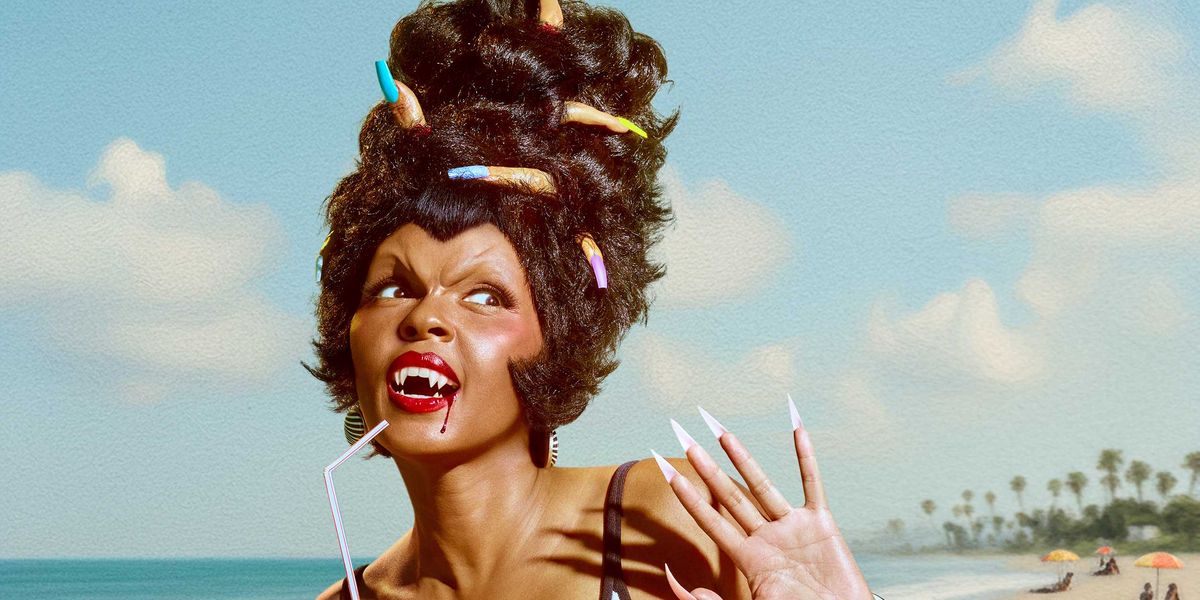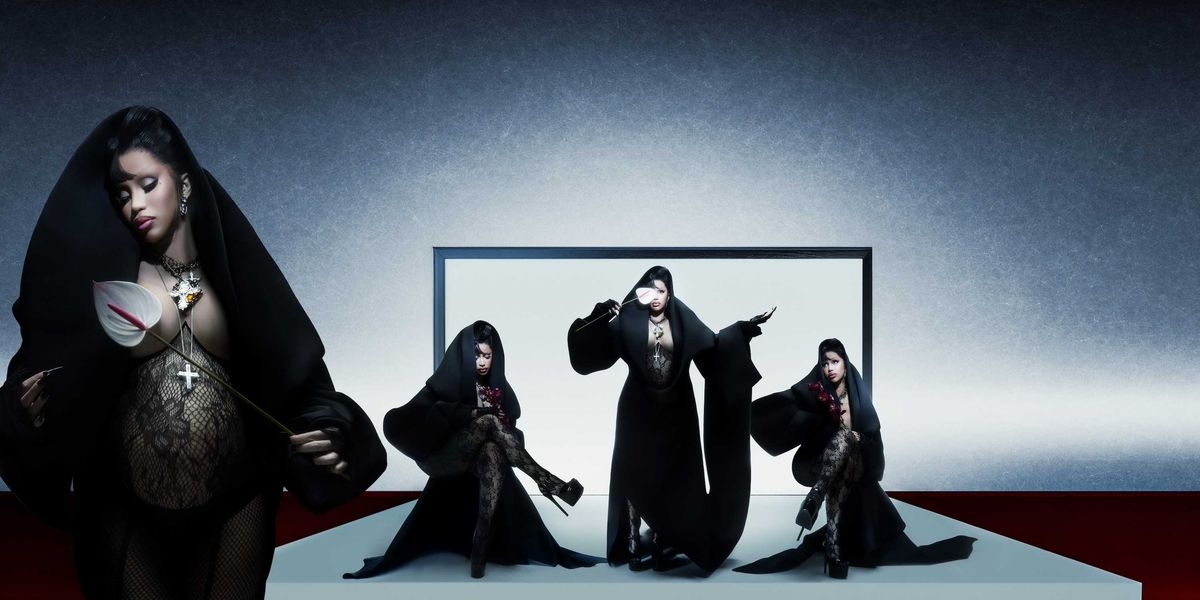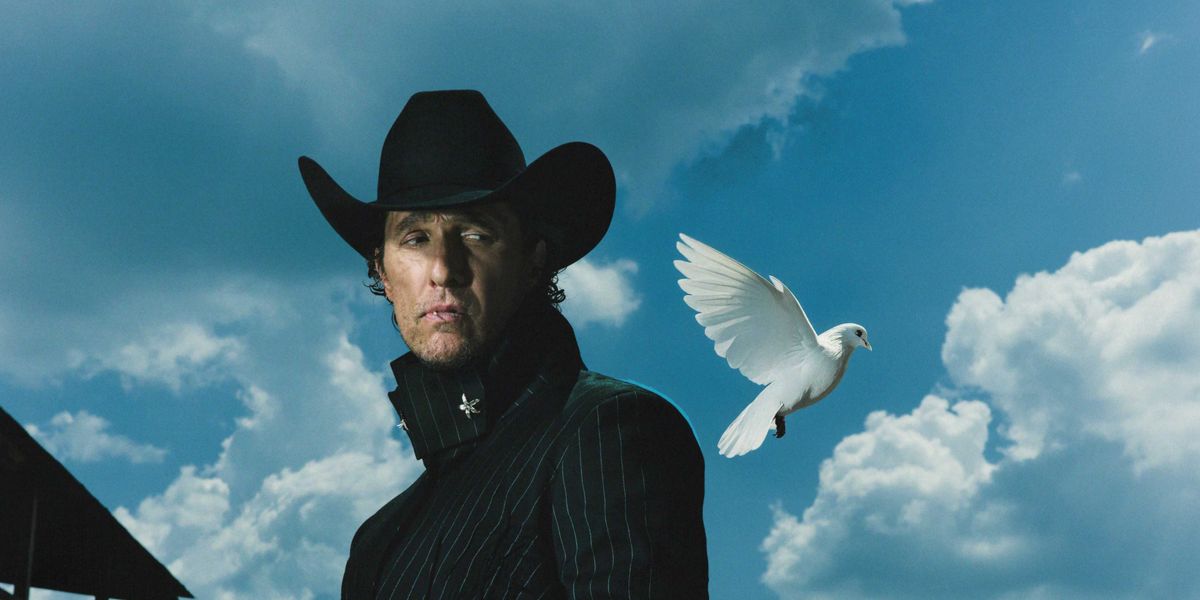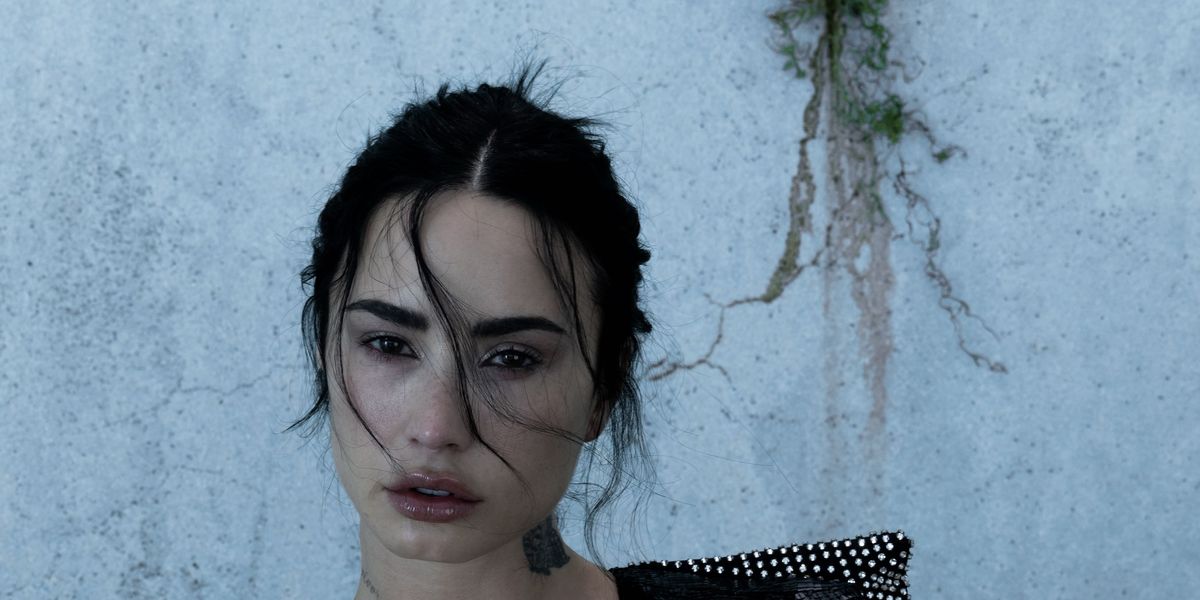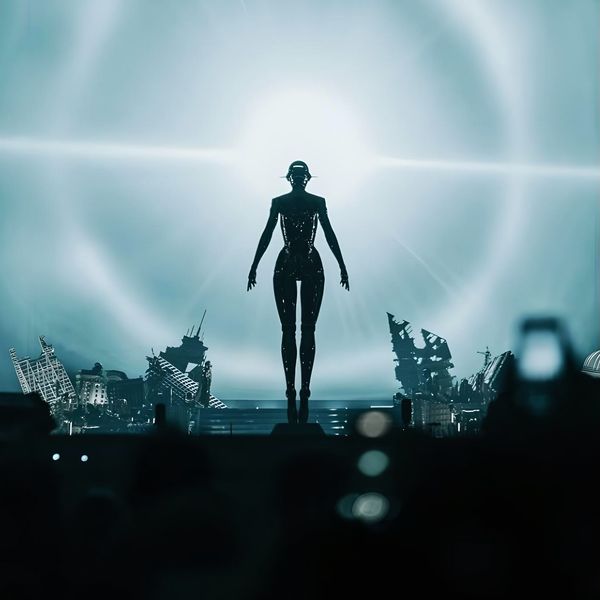
Alexander Wessely On The Weeknd And Building Worlds
Aug 21, 2025
Alexander Wessely's story starts when he was just a teenager roaming the streets of Stockholm. Bored, rebellious, and insatiably creative, the Swedish-Greek artist spent his time spray painting graffiti against walls, embracing the instant gratification he received when a passerby would admire his work. As the mediums he worked with changed, that feeling became a driving force in his life.
Fast forward to now, and his self-created career in creative direction has led him to not only building his own worlds, but also universes for artists he resonates with like FKA Twigs, Anyma, Swedish House Mafia, Rihanna, Grimes and The Weeknd.“We did music videos, stage designs, marble sculptures together,” Wessely recalls of his collaborations with the Canadian star. “Most recently, I did the Sao Paulo show for him, where he kicked off this new era. He’s in a super visual space.”
PAPER has had the pleasure of seeing different iterations how The Weeknd has brought his album Hurry Up Tomorrow to life through visuals and performances — from his early exclusive fan gig as part of Spotify’s Billions Club, his surprise Grammy’s 2025 return, a first look at the film counterpart of the album Hurry Up, Tomorrow, and now — we’re setting up shop at the InterContinental Buckhead in Atlanta, just hours before we get to witness his After Hours Til Dawn Stadium Tour at Mercedes Benz Stadium.
"I hope the emotions and result are a very shattered image of what has been experienced," Wessely says when PAPER asks how he hopes people feel after they witness The Weeknd's stadium show. "I hope some people feel euphoric, some feel happy, some are sad. If I could choose what people would feel, I’d hope it’s a very mixed reaction and that nobody feels the same."

Before we talk about your work on The Weeknd’s current tour, let's talk about your career path and how you became a creative director. What do you think allowed you to do what a lot of people can’t … to be able to take ideas or feelings and make them into a tangible, viewable thing?
That was very nicely put. The story starts with me having a rough time as a kid, not really fitting in in a normal way, roaming the streets of Stockholm, doing graffiti in the ‘90s. That was my first love and obsession and feeling of instant feedback. Then when I was about to graduate high school, they wouldn’t let me get my diploma so I couldn’t apply to school after that. My mother nagged the hell out of [me about] this photography school outside the city. I went there without any passion for photography or will to do it. But it was my only shot at being in a school. So I started there and instantly fell in love with the school. They gave you three months out of the year for personal work where you could basically do whatever you want. You just needed to practice your photography and come back with some result. I did that and then instantly, the camera gave me the same instant feelings and emotions as graffiti. Except here, it was even faster to get feedback without having to wait.
I could project my ideas and get it back in a very interesting way. Through school, I started assisting fashion photographers in Sweden. When I was 18, I was assisting on everything from Vogue Japan shoots to more commercial projects like H&M campaigns. I was working for this photographer who was teaching me about using lighting as a tool for sculpting, like shaping the object you’re shooting. The light source is the sun, and there’s never more than one sun. There’s a main source of light for your images and that’s where you shape the base of your work. That was an idea that stuck with me. A whole different world opened for me. I began to experiment more with people and digital manipulation within Photoshop. I started to really manipulate the images, making my subjects and objects slightly disfigured. I tried to push the silhouettes to make them suggestive and exaggerated. Then I got into fashion photography with Conde Nast and Vogue Italia through this talent program. And I was fairly young, like 21. Me and my girlfriend at the time, wife now, we talked about this and I was like “Oh fuck, my main inspiration is music and it would be so interesting to implement music as a heavier part of my work and storytelling.”
Together, we made the decision to start going to LA. I was working pro bono at the studio and she was working at a cafe. She financed our first trip to LA. We go there and buy an old Jeep that we slept in for three months at the beach in Santa Monica. We started reaching out to agencies and record labels to get in touch with artists. It was quite tough and wasn’t really working, but I was shooting some for free and getting my foot in. We repeated this pattern for three years.
When I was 24, I had this moment where I was in the grocery store. I fell to the ground and was sure I’d had a heart attack. I had so much angst inside me, I was spending my girlfriend’s money to chase this dream of mine. She was so supportive, holding it down. The paramedics showed up and were like “No, it’s a panic attack.” We get back to our car in Santa Monica. I was trying to make the decision to stop this bullshit now and go back to Sweden and do something else. It was messy at that point. Later that same week, I get a response from No I.D. who was at Def Jam at the time. We had been connected by mutual friends months earlier, but nothing happened. He was like “I love your work, I think it’s very suggestive. I don’t see this too much.” Especially in our line of work with commercial artists. It was all black and white, all shot on analogue and very manipulated. We met up and very quickly, he asked me what I wanted to do. I told him I wanted to work with artists. He connected me with J. Cole who was new at the time. Then Common and Big Sean, he had one song. That was my jump into working with musicians and music in general. Shortly after that, Avicii’s old manager hit me up and was like “Hey, I didn’t know you were Swedish. I saw you were working with J. Cole. Would you like to work with Tim?” Avicii was new at the time, he had a couple of songs. He wanted me to come to Europe and I did. I got picked up by a black SUV in Santa Monica a few weeks later, they flew me to Europe and I started working with him. It was happening during the genesis of electronic music becoming popularized and crossing into commercial pop.
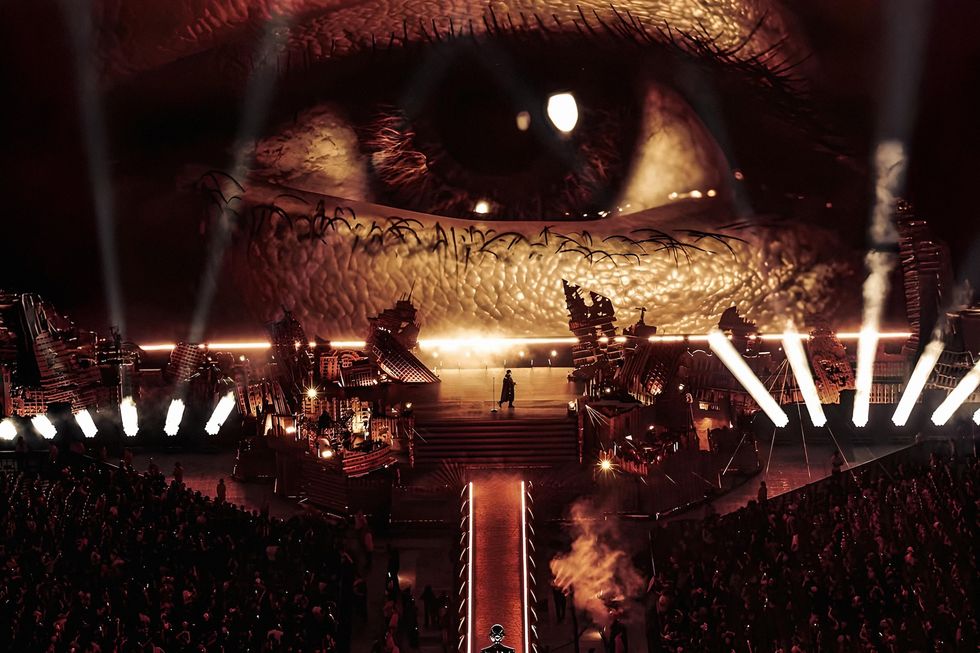
That was in 2012 or 2013. After that, I never left that sphere. In the years to come, I started working with Pusha T and then Ash, Avicii’s manager, set me up with Rihanna. At this time, people started to challenge me and were more interested in the concepts rather than the photography. I started directing music videos for different artists and that led me to start hating the industry in a way. It was overwhelming so I started looking for the meaning in the work. I went to Greece, and I had been going between Athens and Stockholm while growing up, so I went there to find meaning.
I ended up in this new city in the center of Greece and met with a third-generation sculpture family. I started learning about sculpture. My grandma had been teaching me about it my whole life. I really fell in love — the way I did with graffiti and the camera and collaborating with artists. My biggest love became sculpture. At that time, I was figuring out in my head how to stand on two legs, one in pop culture and commercial stuff, and then an art leg in institutions. Slowly but surely, things started to fall into place. A lot of institutions I work in now are very welcoming towards the bridging, taking parts from the commercial, collaborative work. But back then it was harder. Around 2019, I was hit up by Swedish House Mafia, who were going to have a comeback. They asked if I wanted to helm the whole project: photography, creative design, everything. I ended up doing that with Virgil Abloh. We relaunched them and Virgil did the main campaign with them, with this T-shirt on Instagram. Then we worked together for years with them. We started working with Abel, The Weeknd, with his whole team. I did the stage design for the 2022 Coachella performance between The Weeknd and Swedish House Mafia.
I was at the show.
The goal of the show was actually to drown you with the imagery. After that, I took a break from Swedish House Mafia as a band. We worked very closely for four or five years. Parallel to this, I was working for some exhibitions with heavy focus on my marble sculptures. For the past couple years, I’ve wanted to merge that with a 360 experience. I want to walk through all the steps of my career when it comes to mediums. Very naturally I kept collaborating with The Weeknd. We did music videos, stage designs, marble sculptures together.
Most recently, I did the Sao Paulo show for him where he kicked off this new era. He’s in a super visual space. Side note, I did the Anyma show at the Las Vegas sphere. Through that, it opened up the eyes of lot’s of other artists. It’s not niche, but very specific. Done correctly, it can blur the lines of what’s real and what’s not. The real and the digital. Is it practical or physical? That’s really triggered some ideas for what’s been happening after. The sphere was a fantastic canvas and starting point for a new era in my practice.
I have so many questions. First of all, your story is incredible. It’s so inspiring because you talked about these choice points where there was a level of, not boredom, but seeing moments of lack of interest as a moment to go in a new direction … not as moments of failure or giving up. I’m curious, does that come from a place of self-trust? Faith? Like being in Greece and knowing you want to go into sculpture? Or photography is starting to feel bland and I want to focus on music more. How do you take those leaps?
I love this question. To be honest, throughout this whole thing, I’ve always had a safety point or anchor in my wife. She’s like a boss through this whole thing. I’ve always felt very safe navigating what’s going on. I know that if I fuck this thing up, we do it together. I’ve always had that. It’s pretty insane. The reason I stopped working with Swedish House Mafia in 2023, in 2024 I started working with a lot of artists like Grimes, FKA Twigs, 070 Shake. The space between those two moments, which was one of those moments, it starts to burn. That’s how it happens. It burns and I don’t know what it’ll look like in 12 months. My wife, my two little demons, I have a five-year-old and a seven-year-old, and I went to Greece. After a couple of months of working on my sculptures, I felt the need for the fire and chaos again. It’s uncontrollable. That’s one of the driving factors. I need the calm and the chaos.
I don’t know a better way to put it. It’s something I lust for. It’s a way to keep me excited and motivated. I’m never sure if it’s the right choice but can always feel if something is over for me or stagnant. And that’s usually the time to move on. I’m sure that in five years, I won’t be doing what I do now. It’s something I already feel. I want to push for something slightly different pretty soon. At times, I’ve wanted to go back to photography and explore it in a new way, using new technology that wasn’t available at the time. Between my wife and urge of really wanting things to be mad around me, those are the main factors and reasons why I can challenge what’s going on. I’m very easily bored. ADHD and all that. I’m a relatively calm person, but for some reason I love when it’s tumultuous and madness going on around me.

I love that, the chaos and the calm. You mentioned, when you were working in photography and in fashion with these big brands, that you and your wife made the decision to move to LA to pursue more music. What were some of your first interactions with music that made you want to collaborate with more artists and start working with them and with performance vs what you had been doing with photography?
I would say, when I clicked with a musician, things got very personal and real. The way I worked in fashion wasn’t that. It was more “This thing is your subject. Shoot it.” Then you leave and don’t speak again. I’m very for collaboration and longevity. When it comes to collaboration and things that last, I want them to be meaningful. A lot of people I work with, we have very close contact. Even if we worked together seven years ago, I love that bond that’s been shaped working closely on something that’s going to live on.
070 Shake, for instance, she’s one of those collaborations. We met the first time in ‘21 and she has really been a fantastic collaborator on all levels. She’s obviously very talented but she’s a true artist, in its realest form. For her, history comes first. You can be the biggest pop star, but nothing can compare to that energy that’s being transferred to me. Same with Grimes and Twigs. It’s insane. The level is so refreshing being in those rooms and really having that inspiration and energy and pure, raw will getting transferred to you. I love that. Some work can be very two-dimensional and I got to escape that with my early work in music as opposed to fashion. That really stuck with me, the collaborative and emotional side around it. It was a bigger canvas to work with. All the sudden, it’s all these layers and world we can expand on. It turns into performative works.
Let’s talk about working with The Weeknd on this current tour. I’ve seen photos, it looks incredible. I’m seeing the show in Atlanta. I haven’t seen it in person yet. When you’re creating a world like that, where do you even start? How do you draft a reality that people will be dropped into that will take over all their senses?
For The Weeknd, it’s been a special way of working in a good way. He had a long term creative director, La Mar Taylor. That’s also his partner for his label. Me and Lamar have a collaboration that started around Coachella in ‘22 when I worked with The Weeknd and Swedish House Mafia. Lamar and I have gotten closer of the years, working together more and more. This was the first full-on collaboration. He’s the creative and show director for this tour as a whole, on all levels.
When we approached this, a lot of the elements were based on ideas and moments from The Weeknd’s life from the past couple of years. A lot of the themes are also themes from his movie that was released a month or two ago. It’s everything from the accident he had in a bathtub where he was about to drown, to fighting his demons in very personal ways. These are things that we ended up exploring and investigating. We’re trying to portray and visualize them in this show. A lot of the pieces are inspired by Abel himself. And then we expanded on this world to give it a narrative and proper journey with highs and lows, visually.
That’s why I said this was unique for me. Because I love Lamar, he’s a fantastic creative director. And we have this whole base narrative and concept that acts as a foundation for ideas themselves. And having all these pieces made by me interacting with other sculptures adds to what we talked about earlier. We can’t always understand what we’re experiencing in real time. Is it practical? Is it digital? Is the sculpture real? At times, I really want the audience to feel this way. I want it to feel like existential terror. Like, what the fuck is going on? And then you land and a new path gets shaped. That’s more or less how this project came to life. And also pushing for something that’s not too common for this level of pop star. We really wanted to push art history in the best way possible.

You mentioned that in five years, you may go in another direction. In this next chapter, since a lot of these projects are out and people are already experiencing them, what are you focused on now? What are you creating now?
Right now, I’m working on my first 360 hands-on opera project, where I am co-writing the opera from start to finish. It’s a 360 approach to one of the largest operas in Europe. It’s officially being announced in December. I’ve put a lot of time and energy into it and I’m really excited about it. I’m trying to give my art and sculptures all the love they need. It’s so time consuming. Usually when you plan an exhibition, it’s two or three years away. Earlier this year, in May, I debuted at a museum in Barcelona with a 100-meter-wide visual projection on the building of the museum. That was something that intrigued me that I really want to explore more of ... unexpected video sculptures in places where you really wouldn’t expect them. Talking about the next couple of years, as well, all the stuff I haven’t been dipping my toes into intrigues me. It can be whatever, to be honest. Some of the stuff, I hope sticks with me through my life, the sculptures being one. They mean a lot, they’re permanent and they’re very real to me. That’s actually something that drives me too. The collaborations with artists need to be seen now ... but the sculpture is very much the opposite. It’s forever in the exact same way, more or less. With that being said, there’s more digital works being worked on and more performance works being worked on. The Weeknd project has gotten a lot of attention for the past year or so.
One last question. When people experience this performance — I know you mentioned so many emotions you hope the show elicits — but what dominant message or experience do you hope they walk away with?
I hope the emotions and result are a very shattered image of what has been experienced. I hope some people feel euphoric, some feel happy, some are sad. If I could choose what people would feel, I’d hope it’s a very mixed reaction and that nobody feels the same. Obviously The Weeknd, his music pierces through everything and his music, for the past ten years, tells his life in a way. It’s, in a way, tough competition working visually with someone with his catalogue. It’s insane. You can have a moment, where if you isolate the visual piece, it’s very dark and sad and should trigger a different emotion. But we’ve made juxtapositions to it, where it’s a happy song or love song that creates a sense that lets some people experience it beautifully, while some feel sad. I hope it’s a mixed reaction.

Photography: Hughly
From Your Site Articles
Related Articles Around the Web
MORE ON PAPER
Entertainment
Rami Malek Is Certifiably Unserious
Story by Joan Summers / Photography by Adam Powell
Story by Joan Summers / Photography by Adam Powell
14 November
Music
Janelle Monáe, HalloQueen
Story by Ivan Guzman / Photography by Pol Kurucz/ Styling by Alexandra Mandelkorn/ Hair by Nikki Nelms/ Makeup by Sasha Glasser/ Nails by Juan Alvear/ Set design by Krystall Schott
Story by Ivan Guzman / Photography by Pol Kurucz/ Styling by Alexandra Mandelkorn/ Hair by Nikki Nelms/ Makeup by Sasha Glasser/ Nails by Juan Alvear/ Set design by Krystall Schott
27 October
Music
You Don’t Move Cardi B
Story by Erica Campbell / Photography by Jora Frantzis / Styling by Kollin Carter/ Hair by Tokyo Stylez/ Makeup by Erika LaPearl/ Nails by Coca Nguyen/ Set design by Allegra Peyton
Story by Erica Campbell / Photography by Jora Frantzis / Styling by Kollin Carter/ Hair by Tokyo Stylez/ Makeup by Erika LaPearl/ Nails by Coca Nguyen/ Set design by Allegra Peyton
14 October
Entertainment
Matthew McConaughey Found His Rhythm
Story by Joan Summers / Photography by Greg Swales / Styling by Angelina Cantu / Grooming by Kara Yoshimoto Bua
Story by Joan Summers / Photography by Greg Swales / Styling by Angelina Cantu / Grooming by Kara Yoshimoto Bua
30 September
Music
Demi Lovato Is No Joke
Story by Ivan Guzman / Photography by Jason Renaud / Styling by Chris Horan/ Makeup by Loftjet / Set design by Allegra Peyton
Story by Ivan Guzman / Photography by Jason Renaud / Styling by Chris Horan/ Makeup by Loftjet / Set design by Allegra Peyton
15 September

